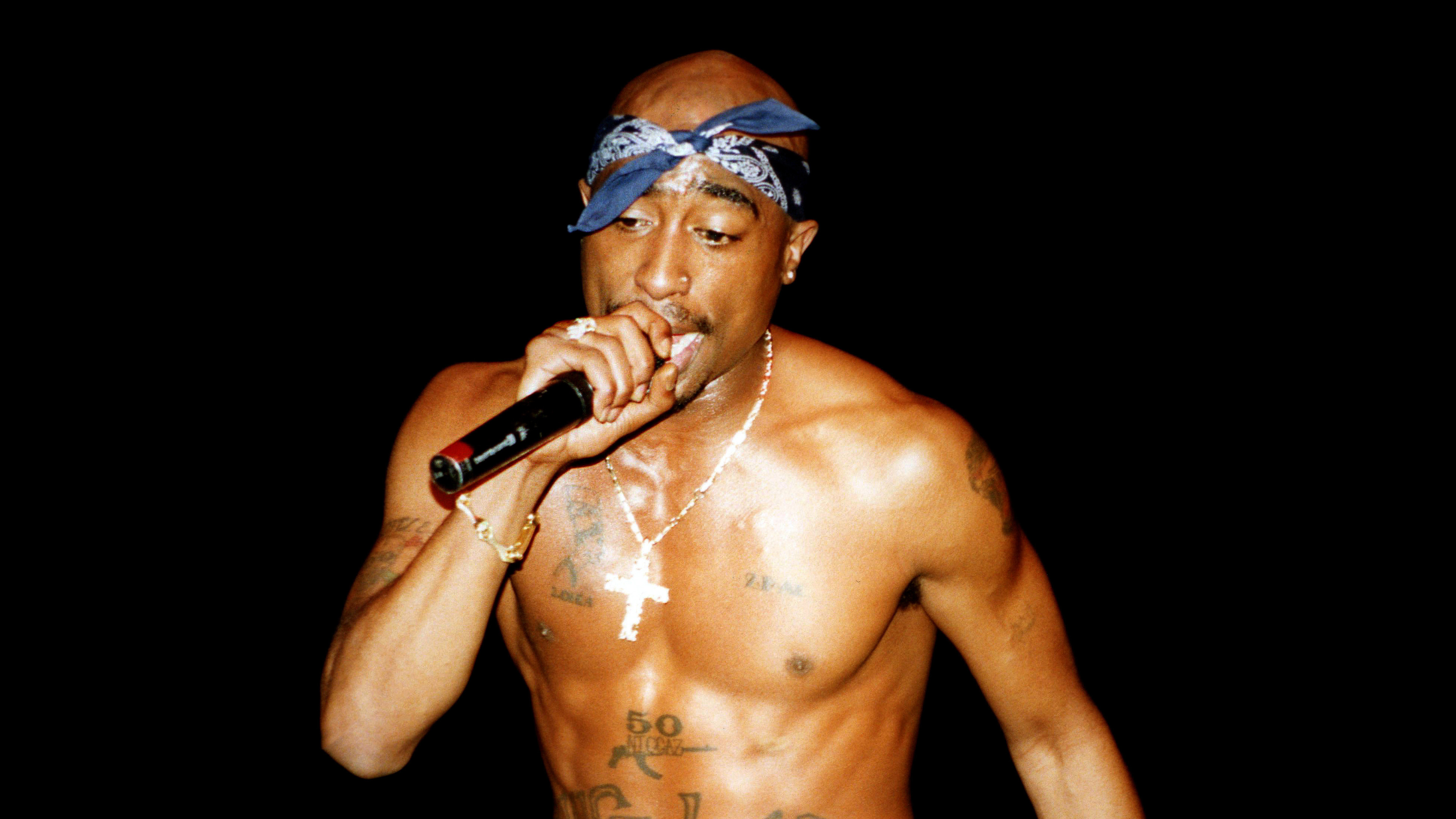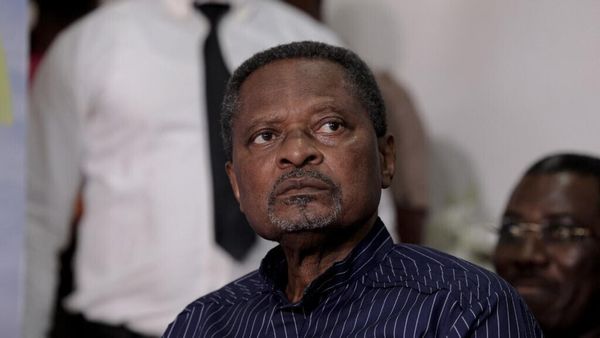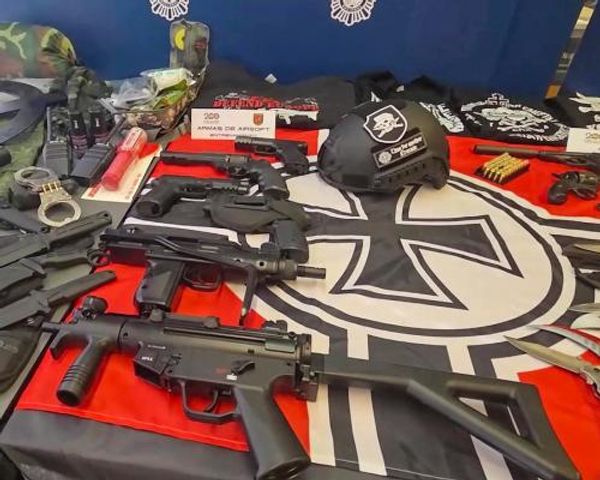
By the mid-1990s, the success of the West Coast hip-hop scene meant that California rappers were feeling unstoppable.
Their lyrics were braggadocious, the beats were glossy and luxurious, and a sense of self-assurance and pomp oozed through the fabric of the music.
Nowhere is this more evident than in 2Pac's 1995 hit California Love, featuring fellow West Coast heavyweight Dr. Dre and pioneering funk singer Roger Troutman.
Dropped as a single on 3 December 1995, 2Pac's first release on Death Row Records spent two weeks at No.1 on the US Billboard Hot 100.
California Love was a perfect example of the lavish, feelgood sound cultivated by Dre and his contemporaries in this hip-hop golden age — a golden age that was about to be shattered by the dual killings of Tupac Shakur (aka 2Pac) and Christopher Wallace (aka The Notorious B.I.G.).
In the 30 years since California Love was released, its status as one of the defining tracks of the era has only been strengthened.
Multiple versions of this track exist. Snoop Dogg's live DJ Jam reputedly has his own exclusive copy. But the original version, featuring a first verse from Dre and a second verse from 2Pac, separated by Troutman's iconic hook, is the best known.
From Dre's legendary opening line (“Let me welcome everybody to the wild, wild west/A state that's untouchable like Elliot Ness”) to the extended outro listing the US state's many illustrious rap hot spots (Long Beach, Oakland, Frisco…), California Love glistens with a kind of sunny, dazzling menace, transporting you to the back seat of a massive, bouncing lowrider, leather baked by the heat of the afternoon sunshine – but firmly letting you know who's in charge of the vehicle.
Various production flourishes from Dre help achieve this effect.
The beat takes a chunky series of six chord stabs sampled from British blues singer Joe Cocker's 1972 song Woman To Woman and gives it a ’90s LA pimp-up, doubling up the triplet lead-in with a triumphant brass section, pumping in a driving, simplistic rhythm section, and adding ethereal, echoing keys with tons of resonance.
The other notable sample sees Dre clip up a fragment of vocals from funk band Zapp's 1985 track Dancefloor, on which frontman Roger Troutman sings, “Shake it! Shake it!”
Troutman had also recorded with Parliament/Funkadelic and was an icon to ’90s West Coast rappers, who heavily sampled his pioneering funk sound, and his role in California Love could have ended there. But Dre made the inspired decision to reach out to the man himself for a feature.
In one interview, Troutman recalled hearing from a mutual friend that Dre was looking for him.
"I called Dre and he said, ‘Yo man… I wanna build this from the ground up. I don't want a sample, I wanna do it straight from the studio.’ I said, ‘Sure man, let's hook it up.’ A couple days later, he flew me out to LA, took me to his studio – beautiful house, beautiful studio."
Troutman added: “A lot of people are under the impression I was the mastermind behind California Love [but it] was Dr. Dre's idea completely, from start to finish. When I walked into the studio, he did everything, even as much as telling me how the melody should go — he sung the melody in my ear!”
That vocal section would be altered heavily by a piece of tech Troutman became renowned for: his custom-made Electro-Harmonix Golden Throat talkbox.
Made famous via landmark Zapp tracks I Can Make You Dance and More Bounce To The Ounce, the voice box was central to Troutman's cries of “California knows how to party” and “In the city, the city of Compton/We keep it rocking”.
Inspired by the 1982 Ronnie Hudson & The Street People track West Coast Poplock, (which was itself influenced by the earlier Zapp track So Ruff, So Tuff), the robotic-sounding hook relied on the magic of Troutman's voice box.
Centring around a compression driver which used small vibrations to build sound pressure, Troutman's box physically pumped audio up a tube and into the singer's mouth, before funnelling it to an external microphone, creating a sound which, Troutman said, would “hypnotise” people.
Troutman connected the box to a Yamaha DX100 synthesiser for the California Love recording, which was reportedly a rapid affair.
While Dre spent ages working on the beat beforehand, the vocal recordings took no time at all.
Troutman received clear instructions from his producer, but 2Pac – who had just been released from prison after serving eight months of an 18-month minimum sentence for sexually abusing a woman in a New York hotel room – was given free rein.
According to hip-hop DJ and producer Chris ‘The Glove’ Taylor, 2Pac turned up at Dre's house and jumped straight into the studio as he was working on California Love.
“I saw Tupac in the booth recording a verse to the beat we had just made,” Taylor said. "The entire process was about 20 minutes altogether, and it was just amazing.”
Dre was also struck by the speed with which 2Pac operated. “He was one of the most talented people I've worked with,” Dre said. “Usually people sit in the control room, and write the lyrics to the tracks that I present. He went in the mic booth, put the headphones on, I let the track run down one time, instrumental, and when I rewound it he said he was ready, he had his verse done.”
The lyrics 2Pac landed on that day are hardly surprising given his situation at the time: “Out on bail, fresh out of jail/California dreamin’…”
A sense of hedonism is present across the track, which wasn't just a 2Pac comeback record but a high point for Death Row Records, with Rolling Stone magazine describing California Love as “Dr. Dre’s last great moment with the world-conquering label he and Suge Knight co-founded”.
Just months after the release of California Love, Dre would leave Death Row to found Aftermath, causing a rift with the man he collaborated with on this mega-hit.
California Love, then, represents a pivotal moment in time: when the West Coast was united, the music was full of swagger, and two hip-hop greats were still with us.







